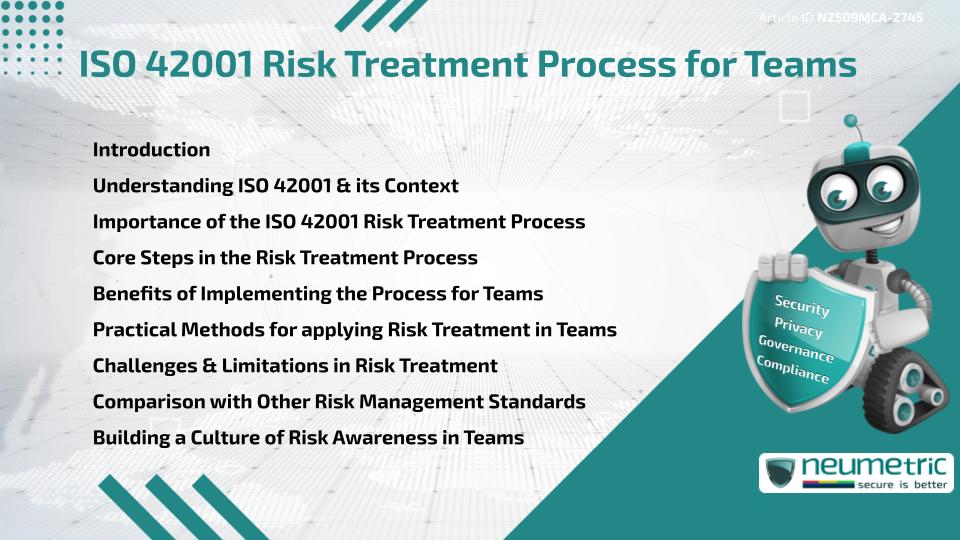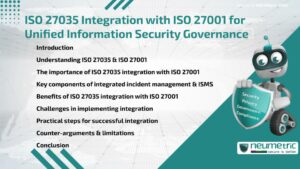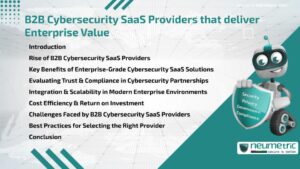Table of Contents
ToggleIntroduction
The ISO 42001 Risk Treatment Process is a structured approach that enables teams to identify, assess & mitigate Risks in alignment with organisational goals. ISO 42001, the international Standard for Artificial Intelligence management systems, provides a Framework for managing Risks associated with AI technologies while promoting Responsible use & Governance. For teams, applying the ISO 42001 Risk Treatment Process ensures that Risks are not only addressed effectively but also embedded into day-to-day operations, enhancing overall Resilience & Accountability.
Understanding ISO 42001 & its Context
ISO 42001 is a relatively new International Standard focused on AI Management Systems. It guides Organisations in developing, implementing, maintaining & continually improving systems that ensure AI technologies are used responsibly. At the heart of this Framework is Risk Management, which ensures that AI Systems operate in line with Ethical, Regulatory & Organisational expectations.
The Risk Treatment Process under ISO 42001 helps teams respond systematically to identified Risks, aligning operational decisions with broader Governance requirements.
Importance of the ISO 42001 Risk Treatment Process
AI introduces unique Risks, from Bias & Data Privacy issues to Operational failures & Ethical concerns. The ISO 42001 Risk Treatment Process ensures these Risks are not ignored but addressed with appropriate strategies. By adopting this process, teams can:
- Strengthen Trust in AI Systems
- Reduce Regulatory & Reputational Risks
- Improve Operational effectiveness
- Support long-term Innovation with Accountability
For teams working directly with AI, this process offers a practical pathway to align with Compliance while maintaining efficiency.
Core Steps in the Risk Treatment Process
The ISO 42001 Risk Treatment Process consists of key stages that teams must follow:
- Identify Risk Options – Determine possible strategies such as mitigation, transfer, acceptance or avoidance.
- Evaluate Options – Assess which strategy best balances cost, effectiveness & Compliance.
- Develop Treatment Plans – Document the actions, responsibilities & timelines for addressing Risks.
- Implement Controls – Put selected measures into practice.
- Monitor & Review – Continuously evaluate the effectiveness of Controls & adjust where necessary.
These steps ensure Risk Management is not a one-time exercise but an ongoing cycle.
Benefits of Implementing the Process for Teams
Adopting the ISO 42001 Risk Treatment Process brings several benefits:
- Clarity in roles & responsibilities – Teams know who is accountable for Risk actions.
- Enhanced collaboration – Encourages cross-functional engagement to address complex AI Risks.
- Better decision-making – Provides structured data to guide priorities.
- Improved Stakeholder trust – Demonstrates responsible AI Governance.
These benefits help teams work cohesively while strengthening organisational Credibility.
Practical Methods for applying Risk Treatment in Teams
To apply the Risk Treatment Process effectively, teams can:
- Conduct regular Risk workshops to review Threats & brainstorm solutions.
- Use Risk registers to document, track & update treatment actions.
- Apply scenario analysis to test the impact of different Risk strategies.
- Leverage automation tools for monitoring & reporting AI-related Risks.
These practical methods transform the standard’s Framework into actionable practices.
Challenges & Limitations in Risk Treatment
Despite its value, the ISO 42001 Risk Treatment Process is not without challenges. Teams may struggle with limited resources, overlapping responsibilities or difficulties interpreting abstract Risks like Ethical impacts. Additionally, rapidly evolving AI technologies may create Risks faster than teams can assess or mitigate. Addressing these challenges requires Continuous Training, clear Communication & Leadership support.
Comparison with Other Risk Management Standards
While ISO 27001 focuses on Information Security & ISO 31000 provides general Risk Management principles, ISO 42001 is unique in targeting AI-specific Risks. It integrates lessons from these established standards while adding focus on Fairness, Accountability & Transparency in AI Systems. For teams, this provides a specialised Framework tailored to the Risks emerging from advanced technologies.
Building a Culture of Risk Awareness in Teams
Successful adoption of the ISO 42001 Risk Treatment Process requires more than checklists-it demands a cultural shift. Teams must embed Risk awareness into daily practices, from project planning to decision-making. Encouraging open communication about Risks, rewarding proactive identification & aligning incentives with responsible practices all contribute to building this culture.
Conclusion
The ISO 42001 Risk Treatment Process provides teams with a structured, repeatable approach to addressing AI-related Risks. By embedding this process into daily operations, teams strengthen Resilience, align with Governance frameworks & build Trust in AI technologies.
Takeaways
- ISO 42001 sets the Standard for AI Management Systems with a strong focus on Risk.
- The Risk Treatment Process involves identifying, evaluating & implementing strategies.
- Benefits include improved collaboration, decision-making & trust.
- Teams face challenges but can overcome them with training & leadership support.
- Building a culture of Risk awareness ensures long-term success.
FAQ
What is the ISO 42001 Risk Treatment Process?
It is a structured method under ISO 42001 that helps teams address AI-related Risks through strategies like mitigation, transfer or acceptance.
Why is Risk treatment important for AI Systems?
It ensures AI is used responsibly, minimising Regulatory, Operational & Ethical Risks while strengthening trust.
What are the key steps in the Risk Treatment Process?
Steps include identifying options, evaluating them, planning treatments, implementing controls & monitoring results.
How does ISO 42001 differ from ISO 27001 or ISO 31000?
ISO 42001 focuses specifically on AI Risks, while ISO 27001 addresses Information Security & ISO 31000 offers general Risk Management principles.
What are some challenges in applying the ISO 42001 Risk Treatment Process?
Challenges include resource limitations, evolving AI Risks & difficulty interpreting abstract Risks like bias or fairness.
How can teams apply the process practically?
Teams can hold Risk workshops, use Risk registers, conduct scenario analysis & apply automation tools for monitoring.
Does the Risk Treatment Process guarantee Risk elimination?
No, it focuses on reducing Risks to acceptable levels rather than eliminating them entirely.
Need help for Security, Privacy, Governance & VAPT?
Neumetric provides organisations the necessary help to achieve their Cybersecurity, Compliance, Governance, Privacy, Certifications & Pentesting needs.
Organisations & Businesses, specifically those which provide SaaS & AI Solutions in the Fintech, BFSI & other regulated sectors, usually need a Cybersecurity Partner for meeting & maintaining the ongoing Security & Privacy needs & requirements of their Enterprise Clients & Privacy conscious Customers.
SOC 2, ISO 27001, ISO 42001, NIST, HIPAA, HECVAT, EU GDPR are some of the Frameworks that are served by Fusion – a SaaS, multimodular, multitenant, centralised, automated, Cybersecurity & Compliance Management system.
Neumetric also provides Expert Services for technical security which covers VAPT for Web Applications, APIs, iOS & Android Mobile Apps, Security Testing for AWS & other Cloud Environments & Cloud Infrastructure & other similar scopes.
Reach out to us by Email or filling out the Contact Form…





